- Jonathan Dean
- Albums and Singles
 Only a week afterreviewing their quite good self-titled reissue on Wabana, I am forcedto agree that this is the finest missive yet issued from the Bostoncollective. It's the group's first release on the Bastet label, therecord-releasing arm of the trendy Arthur Magazine, a flimsy,ink-smudged free-press monthly from Los Angeles that seems to havebecome the taste-making publication du jour for the indie folk, psychand metal scenes. Bastet has already released a limited Sunn O))) livealbum and the scene-defining Golden Apples of the Sun compilation, and here comes a third great release that is sure to solidify its status as a label to keep an eye on. No Magic Manboasts the finest quality SBHOTM live recording yet, appearing to havebeen edited down from a series of recent performances, and carefullysequenced so that it has the feel of a coherent whole, a concept albumof sorts. The loose concept is Egyptian high magical ritual, and thealbum is littered with transitional tracks that seem to have been takenfrom a 1970s TV documentary on the mysteries of Ancient Egypt, thenarrator's voice pitched down and distorted at random intervals. Thisconceptual musique concrête technique creates a hauntingly cryptic andnostalgic mood to the proceedings, and the tracks where the ensembleworks their improvisational magic are utterly hypnotizing. The grouphas matured considerably in the few years they've been playingtogether, and No Magic Man evidences this growth. Theirimprovisations spend less time meandering about as players find theirfooting, and more time locked into a solid groove. The keyboards andguitar are in especially fine form throughout the album, creatingmelodic loops of ascending and descending melodies that weave aroundeach other in a strange and hypnotic dance. Vaguely Arabic soundingscales are created with guitar and synthesizer that form perfectscaffolding over which the other eight-or-so members hang theircontributions. On "The Air Itself," Rob takes the microphone for one ofhis free-associated lysergic monologues that should be familiar toanyone who has seen the band live recently. His Bostonian accent,frequent tentative uhs and stoned, surrealistic automatism make thetrack at once hilarious and mind-expanding, which is largely the appealof a Sunburned live experience. "Yer Own Eyes & The Number None" isthe darkest and most menacing track, an Ash Ra Temple-esque jam thatsuddenly erupts into an intense whirlpool of chaotic noise, which issucked out the other end of a Sun Ra album played backwards. Bandmembers meet and communicate in trancelike rhythmic conversations thateasily dissolve and journey into ever groovier, more righteouslyfucked-up territories. Hopefully, SBHOTM can keep measuring up to thenew bar they've set with No Magic Man, as it is truly one of the most unstoppably groovy, shamanistic records yet to surface this year.
Only a week afterreviewing their quite good self-titled reissue on Wabana, I am forcedto agree that this is the finest missive yet issued from the Bostoncollective. It's the group's first release on the Bastet label, therecord-releasing arm of the trendy Arthur Magazine, a flimsy,ink-smudged free-press monthly from Los Angeles that seems to havebecome the taste-making publication du jour for the indie folk, psychand metal scenes. Bastet has already released a limited Sunn O))) livealbum and the scene-defining Golden Apples of the Sun compilation, and here comes a third great release that is sure to solidify its status as a label to keep an eye on. No Magic Manboasts the finest quality SBHOTM live recording yet, appearing to havebeen edited down from a series of recent performances, and carefullysequenced so that it has the feel of a coherent whole, a concept albumof sorts. The loose concept is Egyptian high magical ritual, and thealbum is littered with transitional tracks that seem to have been takenfrom a 1970s TV documentary on the mysteries of Ancient Egypt, thenarrator's voice pitched down and distorted at random intervals. Thisconceptual musique concrête technique creates a hauntingly cryptic andnostalgic mood to the proceedings, and the tracks where the ensembleworks their improvisational magic are utterly hypnotizing. The grouphas matured considerably in the few years they've been playingtogether, and No Magic Man evidences this growth. Theirimprovisations spend less time meandering about as players find theirfooting, and more time locked into a solid groove. The keyboards andguitar are in especially fine form throughout the album, creatingmelodic loops of ascending and descending melodies that weave aroundeach other in a strange and hypnotic dance. Vaguely Arabic soundingscales are created with guitar and synthesizer that form perfectscaffolding over which the other eight-or-so members hang theircontributions. On "The Air Itself," Rob takes the microphone for one ofhis free-associated lysergic monologues that should be familiar toanyone who has seen the band live recently. His Bostonian accent,frequent tentative uhs and stoned, surrealistic automatism make thetrack at once hilarious and mind-expanding, which is largely the appealof a Sunburned live experience. "Yer Own Eyes & The Number None" isthe darkest and most menacing track, an Ash Ra Temple-esque jam thatsuddenly erupts into an intense whirlpool of chaotic noise, which issucked out the other end of a Sun Ra album played backwards. Bandmembers meet and communicate in trancelike rhythmic conversations thateasily dissolve and journey into ever groovier, more righteouslyfucked-up territories. Hopefully, SBHOTM can keep measuring up to thenew bar they've set with No Magic Man, as it is truly one of the most unstoppably groovy, shamanistic records yet to surface this year.samples:
Read More
- Andrew Culler
- Albums and Singles
23Five
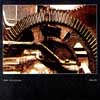 They, along with people like Christian Marclay, EmilBeaulieau, and Boyd Rice, became the first to take a turntable'sarchaic playback mechanism to task as an instrument, capable not onlyof an easily-manipulated and virtually inexhaustible bank of noise, butalso of almost automatic syntactic headfuckery. The plunderphonic,Negativlandian impulse had already begun to assert itself in 1987, butGum's purely phonographic stance brought that same brand of pop culturecommentary and exploited sound-bytes in immediate collision with thingspurely visceral. The duo scratched, sanded, baked, burnt, and otherwisemutated their thrift store finds, assembling a collection of lockedgrooves and blasted sound chips that essentially gave forgotten recordsnew life, fodder for a kind of surreal puppet circus where strung-upcorpses grind out stunted, nervous repetitions of a living dance. Gum'strajectory moves from something like a punkier incarnation of theplunderphonic phenomenon, to amateur industrial klang, to wildlysuccessful sound collage efforts that in many ways predict the soundsof today's turntable namedrops: Philip Jeck, Martin Tretault, JanekSchaefer. Curtis and Samartzis put more emphasis on the process end,that is the abrasions and mutations of the records and their preciserecombination, than on any kind of re-contextualization of recognizablesources. The few tracks to actually show their age are in fact the oneswhere the duo's intent appears too transparent, their motives too easy:phone-sex dialogue featuring Curtis set to an effected Super Fly soundtrack or a live set where the Bee Gee's Saturday Night Feverbecomes the rhythmic template. Elsewhere, the simple and arrestingpower of the duo's surface scavenges, and their queasy track titles("Testicle Stretch," "Smooth Torture in Exile," "Arm Fuck"), becomemore than adequate in communicating a hilarious, dystopian, andultimately beautiful worldview. Especially on the longer tracks like"Banning" or "Melted Limp Fallout," Gum achieves mysterious andimmersive sound environments that feel perfectly suited to the presentday and help to explain Samartzis' future work as an accomplished soundartist. Vinyl Anthology collects everything Gum released plusseveral unreleased and live tracks; it is indispensable document forfans of turntable-based music, punkers, noisers, and pop theoristsworldwide. - Andrew Culler
They, along with people like Christian Marclay, EmilBeaulieau, and Boyd Rice, became the first to take a turntable'sarchaic playback mechanism to task as an instrument, capable not onlyof an easily-manipulated and virtually inexhaustible bank of noise, butalso of almost automatic syntactic headfuckery. The plunderphonic,Negativlandian impulse had already begun to assert itself in 1987, butGum's purely phonographic stance brought that same brand of pop culturecommentary and exploited sound-bytes in immediate collision with thingspurely visceral. The duo scratched, sanded, baked, burnt, and otherwisemutated their thrift store finds, assembling a collection of lockedgrooves and blasted sound chips that essentially gave forgotten recordsnew life, fodder for a kind of surreal puppet circus where strung-upcorpses grind out stunted, nervous repetitions of a living dance. Gum'strajectory moves from something like a punkier incarnation of theplunderphonic phenomenon, to amateur industrial klang, to wildlysuccessful sound collage efforts that in many ways predict the soundsof today's turntable namedrops: Philip Jeck, Martin Tretault, JanekSchaefer. Curtis and Samartzis put more emphasis on the process end,that is the abrasions and mutations of the records and their preciserecombination, than on any kind of re-contextualization of recognizablesources. The few tracks to actually show their age are in fact the oneswhere the duo's intent appears too transparent, their motives too easy:phone-sex dialogue featuring Curtis set to an effected Super Fly soundtrack or a live set where the Bee Gee's Saturday Night Feverbecomes the rhythmic template. Elsewhere, the simple and arrestingpower of the duo's surface scavenges, and their queasy track titles("Testicle Stretch," "Smooth Torture in Exile," "Arm Fuck"), becomemore than adequate in communicating a hilarious, dystopian, andultimately beautiful worldview. Especially on the longer tracks like"Banning" or "Melted Limp Fallout," Gum achieves mysterious andimmersive sound environments that feel perfectly suited to the presentday and help to explain Samartzis' future work as an accomplished soundartist. Vinyl Anthology collects everything Gum released plusseveral unreleased and live tracks; it is indispensable document forfans of turntable-based music, punkers, noisers, and pop theoristsworldwide. - Andrew Cullersamples:
Read More
- Administrator
- Albums and Singles
The Leaf Label
 There are clear and obviousreferences to Klezmer, French street music and Flamenco idioms in themusic, and less obvious hints of Mariachi, American and Brit trad-folk.Though the music here is still unmistakably the work of Jeremy Barnes,with odd passages of psychedelic whimsy, the strangeness comes mostlyfrom unexpected cultural juxtapositions and stylisticcross-germinations, rather than from the extended, improvised freakoutsof his previous projects. There is a new emphasis placed oncomposition, musicianship and melody on Darkness at Noon,bringing the project closer in style to groups such as The MagicCarphathians or The One Ensemble of Daniel Padden. Most tracks arebased around Barnes' accordion playing, which is by turns fast andfurious, or slow and droning. Filling out the sound are an array ofinstruments drawn from at least three continents: harp, oud, Turkishcumbus, jaw harp and an array of percussion. For the most part, thealbum is bright, energetic and upbeat, with all the instrumentalelements in perfect synch with each other. "Laughter in the Dark"begins with a Morricone Mexico-by-way-of-Italia trumpet solo, soonjoined by Barnes' squeezebox and percussion. The track slowly anddecisively builds to a fantastically orgasmic center, with a resoundingchorus of voices chanting words drawn from a George W. Bush speech. Thedistinctly Gallic sound of "The Moon Under Water" sounds like a lostcut from Yann Tiersen's soundtrack to Amelie, while "The Water Underthe Moon" is a romantic waltz with strings and piano that skips overwet cobblestones on a dark European street. Perhaps its just that mybrain seems to leap to film imagery, but there are many moments on Darkness at Noon when I was reminded of classic cinema like Reed's The Third Man (shades of Anton Karas' gypsy music score) and Fellini's carnivalesque La Strada."For Slavoj" is a musical tribute to the great postmodern thinkerSlavoj Zizek, playing on the Lacanian philosopher's ideas of nostalgiaand kitsch with a recollective folk tune, replete with syrupy repeatedchorus of "I love you," before dissolving into Steve Reich-style modernclassical piano piece. This is just one of many examples of the breadthand scope of AHAAH's eclectic musical vision, which for all of itshard-won complexity, arrives to my ears as a deliciously gelled andeminently listenable whole.
There are clear and obviousreferences to Klezmer, French street music and Flamenco idioms in themusic, and less obvious hints of Mariachi, American and Brit trad-folk.Though the music here is still unmistakably the work of Jeremy Barnes,with odd passages of psychedelic whimsy, the strangeness comes mostlyfrom unexpected cultural juxtapositions and stylisticcross-germinations, rather than from the extended, improvised freakoutsof his previous projects. There is a new emphasis placed oncomposition, musicianship and melody on Darkness at Noon,bringing the project closer in style to groups such as The MagicCarphathians or The One Ensemble of Daniel Padden. Most tracks arebased around Barnes' accordion playing, which is by turns fast andfurious, or slow and droning. Filling out the sound are an array ofinstruments drawn from at least three continents: harp, oud, Turkishcumbus, jaw harp and an array of percussion. For the most part, thealbum is bright, energetic and upbeat, with all the instrumentalelements in perfect synch with each other. "Laughter in the Dark"begins with a Morricone Mexico-by-way-of-Italia trumpet solo, soonjoined by Barnes' squeezebox and percussion. The track slowly anddecisively builds to a fantastically orgasmic center, with a resoundingchorus of voices chanting words drawn from a George W. Bush speech. Thedistinctly Gallic sound of "The Moon Under Water" sounds like a lostcut from Yann Tiersen's soundtrack to Amelie, while "The Water Underthe Moon" is a romantic waltz with strings and piano that skips overwet cobblestones on a dark European street. Perhaps its just that mybrain seems to leap to film imagery, but there are many moments on Darkness at Noon when I was reminded of classic cinema like Reed's The Third Man (shades of Anton Karas' gypsy music score) and Fellini's carnivalesque La Strada."For Slavoj" is a musical tribute to the great postmodern thinkerSlavoj Zizek, playing on the Lacanian philosopher's ideas of nostalgiaand kitsch with a recollective folk tune, replete with syrupy repeatedchorus of "I love you," before dissolving into Steve Reich-style modernclassical piano piece. This is just one of many examples of the breadthand scope of AHAAH's eclectic musical vision, which for all of itshard-won complexity, arrives to my ears as a deliciously gelled andeminently listenable whole.samples:
Read More
- Andrew Culler
- Albums and Singles
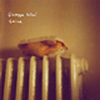 Gesine marks the return of the guitar asdominant voice, this time a rarely-treated almost acoustic soundoccupying a far more subdued setting. Backed only by finger-snap-sizepercussion, a few earth-toned hums and feedback drones, the instrumententers within the already charged atmosphere of the bedroom where thelowest relief or incidental amplifies to the potential hinge for asong's drama. Ielasi's guitar drops like ink in water suspension,coloring and adding sculpture to the backdrop's warm restlessness. Hisfigures, though, are not fixed, meandering instead across a ghostly andascetic blues, very much in the MazzaCane Connors or Charalambidesrealm and with a similar hidden complexity. Close listening providesthat Ielasi has in many cases, quadruple-tracked his guitar, two of itsclones doing a mirror-walk on the scratchy surface level blues patternswhile two more layer harmonic overtones beneath. These under-layerstake on a degree of sterility in their arrangement and inhumanconstancy, pulling Gesine further from the golden antebellumviews of Connors and the C-bides and closer to the disquietedatmospherics of Ielasi's fellow Italian and Viennese improvisers. Bythe fifth of the six tracks, background and foreground have coalescedinto a dual-stranded dagger of whining feedback, a slow black-out of Gesine'sintimate texture that leaves only the drowsy, given-up plucking of thesixth track to map out a final hesitancy. The 30 minute disc is simplyone more beautifully packaged and recorded release from Ielasi, theabove only one reading of music whose inflated miniatures and subtleguitar anti-heroics require many more.
Gesine marks the return of the guitar asdominant voice, this time a rarely-treated almost acoustic soundoccupying a far more subdued setting. Backed only by finger-snap-sizepercussion, a few earth-toned hums and feedback drones, the instrumententers within the already charged atmosphere of the bedroom where thelowest relief or incidental amplifies to the potential hinge for asong's drama. Ielasi's guitar drops like ink in water suspension,coloring and adding sculpture to the backdrop's warm restlessness. Hisfigures, though, are not fixed, meandering instead across a ghostly andascetic blues, very much in the MazzaCane Connors or Charalambidesrealm and with a similar hidden complexity. Close listening providesthat Ielasi has in many cases, quadruple-tracked his guitar, two of itsclones doing a mirror-walk on the scratchy surface level blues patternswhile two more layer harmonic overtones beneath. These under-layerstake on a degree of sterility in their arrangement and inhumanconstancy, pulling Gesine further from the golden antebellumviews of Connors and the C-bides and closer to the disquietedatmospherics of Ielasi's fellow Italian and Viennese improvisers. Bythe fifth of the six tracks, background and foreground have coalescedinto a dual-stranded dagger of whining feedback, a slow black-out of Gesine'sintimate texture that leaves only the drowsy, given-up plucking of thesixth track to map out a final hesitancy. The 30 minute disc is simplyone more beautifully packaged and recorded release from Ielasi, theabove only one reading of music whose inflated miniatures and subtleguitar anti-heroics require many more.samples:
Read More
- Jonathan Dean
- Albums and Singles
Infraction
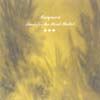 Each of the four tracksbegins in total silence, which is actually unpotentiated sound justbeyond the threshold of audibility. Slowly and gorgeously, the densesound of vintage electric organs begin to coalesce in the far distance,looped steam calliope melodies smeared out across the sky likecumulonimbus cotton candy clouds. Soft and murmuring, Beequeen's dronesare sweet and airy, filling the room with densely immersive butspiritually uplifting sound, a gossamer architecture of floatingspiderwebs and translucent dirigables. It's a sound birthed in adaydream, buoyant melodies from a distant circus big top obfuscated bylayers of fog and abstracted by years spent asleep and dreaming. Music For the Head Ballethas far more to say than an average album of minimalist, electronicambience, which shouldn't be surprising to those who have listened toBeequeen's work through the years. Freek and Frans are singularlytalented at the seemingly effortless creation of mood and atmosphere,impregnating their nebulous compositions with a cerebral quality thatalways welcomes repeated listens. In the midst of its disarming beauty,"Days That Never Were" contains uncanny elements of the ominous,haunted by the distant, fragmented memories of childhood. In contrast,"These Foolish Days" seems breezy and uncomplicated, though it travelsthrough mysteriously gauzy chambers of tantalizingly fuzzydiscombobulation. "White Feathers on a Dish, Used to Erect thePyramids" sounds like an Angelo Badalamenti score skirting just outsidethe edge of melody and cohesion. The new addition of "Remind Me of You"takes an atonal, shapeless swell of organ drones and sets it againstthe summer buzz of sunlight and distant lawn sprinklers. Head Balletis not for those looking for pleasures concrete and tuneful, but ratherfor those that wouldn't mind a total immersion in an esoteric audioenvironment full of half-remembered dreams that slip back into thecloudy murk before they can be fully grasped.
Each of the four tracksbegins in total silence, which is actually unpotentiated sound justbeyond the threshold of audibility. Slowly and gorgeously, the densesound of vintage electric organs begin to coalesce in the far distance,looped steam calliope melodies smeared out across the sky likecumulonimbus cotton candy clouds. Soft and murmuring, Beequeen's dronesare sweet and airy, filling the room with densely immersive butspiritually uplifting sound, a gossamer architecture of floatingspiderwebs and translucent dirigables. It's a sound birthed in adaydream, buoyant melodies from a distant circus big top obfuscated bylayers of fog and abstracted by years spent asleep and dreaming. Music For the Head Ballethas far more to say than an average album of minimalist, electronicambience, which shouldn't be surprising to those who have listened toBeequeen's work through the years. Freek and Frans are singularlytalented at the seemingly effortless creation of mood and atmosphere,impregnating their nebulous compositions with a cerebral quality thatalways welcomes repeated listens. In the midst of its disarming beauty,"Days That Never Were" contains uncanny elements of the ominous,haunted by the distant, fragmented memories of childhood. In contrast,"These Foolish Days" seems breezy and uncomplicated, though it travelsthrough mysteriously gauzy chambers of tantalizingly fuzzydiscombobulation. "White Feathers on a Dish, Used to Erect thePyramids" sounds like an Angelo Badalamenti score skirting just outsidethe edge of melody and cohesion. The new addition of "Remind Me of You"takes an atonal, shapeless swell of organ drones and sets it againstthe summer buzz of sunlight and distant lawn sprinklers. Head Balletis not for those looking for pleasures concrete and tuneful, but ratherfor those that wouldn't mind a total immersion in an esoteric audioenvironment full of half-remembered dreams that slip back into thecloudy murk before they can be fully grasped.samples:
Read More
- Joshua David Mann
- Albums and Singles
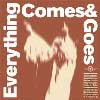 The coverversion could certainly sound better and be better recorded, butwithout the actual authorship of the song, there is an emptiness. Muchbetter to take a song and create a variation on a theme, inspired bythe original but not onerously dictated by it. And so in keeping withthis notion, Temporary Residence presents their Black Sabbath tributealbum called "Everything Comes & Goes," featuring self-proclaimed"interpretations" and "mutilations" of Sabbath's songs (with perhapsone or so being a little more straightforward than the rest). The bandsassembled here stick exclusively to pre-1975 material so there is noconfusion about whether this is Ozzy's Sabbath or Ronnie's or Tony's.This is strictly an Osbournian identity. Matmos inaugurate the sacredrites of tribute with a sparse electronic conception of "F/X." There isa great distance between the original song and Matmos' treatment but,again, this is the kernel of distinction between being a true tributealbum and simply a facsimile album. Japan's Ruins throw their typicalcurveball in what is definitively not a cover version but rather amedley of Sabbath themes enjambed next to one another. The song isforgettable but the band's preemptory (and unnecessary) apology in theliner notes is humorous. The Grails have a post-rock imagining of"Black Sabbath" which is adapted well by the inclusion of the band'sviolin. Another post-rock instrumental is supplied by Paul Newman whometallurgically add a measure of angularity to "Faeries Wear Boots."Four Tet offer a saccharine version of "Iron Man" as only they can.Again, there is not a lot of profundity here, but a pleasant listennonetheless. Curtis Harvey (late of Rex) Trio add an almoststraightforward cover of "Changes" but they countrify and folk it upjust enough to make it one of the better interpretations on thecollection. Ned Oldham's Anomoanon supply the most ghostly and eerie"mutilation" with their take on "Planet Caravan." The song is haunting,meditative, and deliberate, perhaps the most evocative on the album. Inthe final two slots, Racebannon satanically blasts out "Sabbath BloodySabbath" while Greenness w/ Philly G pieces together the mostSabbath-sounding offering yet in their cover of "Sweet Leaf," all thewhile being quite careful not to sound anything like Mogwai's cover ofthe song. While the individual bands here have certainly paid justtribute to Black Sabbath, I don't think that they have necessarily donethem justice. Everything Comes & Goesis more amusing than invigorating, but such amusement should not bedisregarded because it creates a cute album of variations. The bandswere prudent in clinging to the early Sabbath material since soonafterward (post-1980) Sabbath itself became more amusing thaninvigorating.
The coverversion could certainly sound better and be better recorded, butwithout the actual authorship of the song, there is an emptiness. Muchbetter to take a song and create a variation on a theme, inspired bythe original but not onerously dictated by it. And so in keeping withthis notion, Temporary Residence presents their Black Sabbath tributealbum called "Everything Comes & Goes," featuring self-proclaimed"interpretations" and "mutilations" of Sabbath's songs (with perhapsone or so being a little more straightforward than the rest). The bandsassembled here stick exclusively to pre-1975 material so there is noconfusion about whether this is Ozzy's Sabbath or Ronnie's or Tony's.This is strictly an Osbournian identity. Matmos inaugurate the sacredrites of tribute with a sparse electronic conception of "F/X." There isa great distance between the original song and Matmos' treatment but,again, this is the kernel of distinction between being a true tributealbum and simply a facsimile album. Japan's Ruins throw their typicalcurveball in what is definitively not a cover version but rather amedley of Sabbath themes enjambed next to one another. The song isforgettable but the band's preemptory (and unnecessary) apology in theliner notes is humorous. The Grails have a post-rock imagining of"Black Sabbath" which is adapted well by the inclusion of the band'sviolin. Another post-rock instrumental is supplied by Paul Newman whometallurgically add a measure of angularity to "Faeries Wear Boots."Four Tet offer a saccharine version of "Iron Man" as only they can.Again, there is not a lot of profundity here, but a pleasant listennonetheless. Curtis Harvey (late of Rex) Trio add an almoststraightforward cover of "Changes" but they countrify and folk it upjust enough to make it one of the better interpretations on thecollection. Ned Oldham's Anomoanon supply the most ghostly and eerie"mutilation" with their take on "Planet Caravan." The song is haunting,meditative, and deliberate, perhaps the most evocative on the album. Inthe final two slots, Racebannon satanically blasts out "Sabbath BloodySabbath" while Greenness w/ Philly G pieces together the mostSabbath-sounding offering yet in their cover of "Sweet Leaf," all thewhile being quite careful not to sound anything like Mogwai's cover ofthe song. While the individual bands here have certainly paid justtribute to Black Sabbath, I don't think that they have necessarily donethem justice. Everything Comes & Goesis more amusing than invigorating, but such amusement should not bedisregarded because it creates a cute album of variations. The bandswere prudent in clinging to the early Sabbath material since soonafterward (post-1980) Sabbath itself became more amusing thaninvigorating.samples:
- Four Tet - Iron Man
- The Anomoanon - Planet Caravan
- Racebannon - Sabbath Bloody Sabbath
Read More
- Jason Olariu
- Albums and Singles
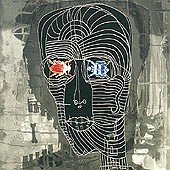 Lacking a lot of the sound experimentation featured on hisdebut album, "Big City Secrets", the theme of "Come To Where I'm From"seems to be perfecting the art of song craft. Beginning with thebittersweet acoustic-led "In The Sun", which has been a long-time livefavorite of Joe's fans and was also recorded by his mentor/label bossPeter Gabriel for a Princess Di tribute album, I had a bad feeling J.A.has gone soft and has given up his cutting edginess for more AOR-drivenpop balladeering. "Chemical" and "History", with their flickeringsounds fluttering around the song's jangly pop heart like butterflywings of distortion, are refreshing reminders that no matter howradio-friendly Joe gets, he's still head-and-shoulders above most ofhis pop-driven peers. Giving further props to Tom Waits, such as"Bottle Of Me" from "Big City Secrets", "Invisible Hands" is alate-night lovers lament, with it's big drums, echoey guitar, andwhispered vocals - personal, sensual, and enticing. "Come To Where I'mFrom" is, essentially, both homage to the genius of the late JeffBuckley and a promise to carry on in the creation of ecstatic,groundbreaking music. Beautifully honest and sublime.
Lacking a lot of the sound experimentation featured on hisdebut album, "Big City Secrets", the theme of "Come To Where I'm From"seems to be perfecting the art of song craft. Beginning with thebittersweet acoustic-led "In The Sun", which has been a long-time livefavorite of Joe's fans and was also recorded by his mentor/label bossPeter Gabriel for a Princess Di tribute album, I had a bad feeling J.A.has gone soft and has given up his cutting edginess for more AOR-drivenpop balladeering. "Chemical" and "History", with their flickeringsounds fluttering around the song's jangly pop heart like butterflywings of distortion, are refreshing reminders that no matter howradio-friendly Joe gets, he's still head-and-shoulders above most ofhis pop-driven peers. Giving further props to Tom Waits, such as"Bottle Of Me" from "Big City Secrets", "Invisible Hands" is alate-night lovers lament, with it's big drums, echoey guitar, andwhispered vocals - personal, sensual, and enticing. "Come To Where I'mFrom" is, essentially, both homage to the genius of the late JeffBuckley and a promise to carry on in the creation of ecstatic,groundbreaking music. Beautifully honest and sublime.Read More
- Chris Roberts
- Albums and Singles
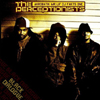 Any hip hop record that references Aqua Teen Hunger Force, The Neverending Story and Street Fighter II in the first 90 seconds without sounding absurdly corny has something going for it, and Black Dialogue just improves from there.
Any hip hop record that references Aqua Teen Hunger Force, The Neverending Story and Street Fighter II in the first 90 seconds without sounding absurdly corny has something going for it, and Black Dialogue just improves from there.Possibly the most heavily anticipated Boston hip-hop release of the past 10 years (ironically released on New York-based Definitive Jux), Black Dialogue represents what is hopefully the once-and-future identity of hip hop: witty, exuberant, politcal, playful and thoughtful all at once. There is also remarkable balance between the players: not once does either Mr. Lif, Akrobatik or Fakts One unfairly steal the stage or fail to shine when called upon, not even when dueting with Boston legend Guru and the notorious big nosed Humpty Hump (!!). Black Dialogue opens with the brash thumper "Let's Move!!," a bombastic call-to-arms that combines the aforementioned dorkiness with the skillful and cerebral rhyming that have served Lif and Ak so well in the past. The two MCs share the spotlight, rhyming line on line, occasionally spitting back and forth, sometimes dropping verses at a time, keeping Black Dialogue's tempo and energy up at all times. Along with hilarious diss couplets like "This ain't no fraternity step-show/ wait, you'll be traded upstate like Bledsoe," Black Dialogue also has social consciousness worthy of Public Enemy. "Memorial Day" decries the war in Iraq and the spurious weapons of mass destruction while honoring those who serve, and the title track is a relevant and timely statement on the status of visible black America, offering a stinging rebuke to the one-dimensional MTV and BET set: "I walk the path my elders laid out/cause acting like a monkey for white folks is played out." Black Dialogue isn't perfect. The attempted ballad "Love Letters" falls flat on its face from the goofy opening lyric "You don't even know I exist/But I want you to/ That's why I'm writing you this love letter," and there's a few too many tracks dedicated to hip hop for hip hop's sake that sound vapid in the face of the heavier fare. But while "Blo" and "People 4 Prez" could be seen as breezy overindulgences, the guest spots provided by Guru on "Party Hard" and Humpty Hump on "Career Finders" simply tear the roof off, more than making up for any shortcoming and sealing the deal on Black Dialogue, a rare combination of relevance and enjoyment -
samples:
Read More
- Administrator
- Albums and Singles

Entschuldigen
This insanely hecticmix of various breaks, noises, jumbles, and explosions unapologeticallymoves at the speed of light. Averaging roughly 26 seconds per track andrecorded live in 2004, Keith Whitman is assembling, abusing, andthrowing away themes, ideas, melodies, rhythms, and effects so fastthat it is sometimes hard to keep up with what's happening. Thankfully,the Irrevocably Overdriven Break Freakout Megamixalbum develops over a series of tracks, letting some melodies andflurries of intergalactic noise doom sink in before they are slappedaround and left for dead in the wake of Whitman's playful attitudetowards his own brand of electronic grooviness. Up until track 18 orso, Whitman stays pretty loose, not letting many rhythms repeatthemselves whatsoever, but playing around with unified sets of samples.After track 18, Whitman seems to have indexed many of the songs bywhich rhythm he was choosing to use underneath an already establishedarrangement based on instrument timbre and mood. In fact, tracks 18through 58 run around a brass-like horn born of the pits of hell, butby track 59 Whitman has ditched that theme altogether and arrived atsome odd crossing of video-game music and tin percussion static. Out ofnowhere track 61 opens up a keyboard melody that dots across a hazy andsmoky series of buzzed out samples and iron crashes. At every turnWhitman is moving into new territory. Sometimes his breaks soundfamiliar, like something that might get a few people dancing, butbefore any four-on-the-floor action can get going, Whitman tears themusic to shreds with the sound of wrecked civilizations and damagedelectronics. Irrevocably Overdriven is a limited run disc(though the site doesn't say just how limited) and is likely to besnatched up quickly and for good reason; music this much fun is rareand the quality of Whitman's live work on this disc is just as good asanything he does at home or in his studio.
samples:
Read More
- Joshua David Mann
- Albums and Singles

Constellation
Among the other things that have been augmented since the first releaseis Efrim's vocal presence, which at this point is pretty ubiquitous. Inthe lower registers, his voice is a fairly stable countertenor whichover-pronounces the lyrics disarmingly. But Efrim can warble his voiceand destabilize it when he reaches and extends it slightly. The effectis purposeful but perhaps not always pleasant. The Mt. Zion music risesand falls behind the vocal wanderings, creating either an impressivemountainous background or an insufficient mole-hill which leaves themusic unguarded and vulnerable. In either case, the socio-politicalcritiques and commentaries of the vocals take center-stage on thealbum, sometimes supported by glittering beautiful music and sometimesleft out to dry like so many of the disenfranchised subjects of theseptet's lyrics. The album's opener "God Bless Our Dead Marines" begsthe question, "Does Canada have Marines, or is he talking aboutAmerica's?" In either case, someone is putting angels in electricchairs, according to Efrim, and the band marches through six disparateand disconnected movements describing a collection losses or deaths,none of whom sound very much like the few and the proud. "MountainsMade of Steam" is the best song in the album, elaborating quietly onthe theme of "My Favorite Things" in its first half. Mt. Zion's chorusbacks up Efrim in this first half, eventually yielding to areverberating guitar which itself gives way to the more fascinatingcello bridge between the final movement. The choir sings over thecello, "The angels in your palm/ sing gentle worried songs,/ and thesweetness of our dreams/ like mountains made of steam" while otherstrings casually but importantly join in. The violins' melody over thecello lilts hypnotizingly and too soon the song dissipates without anyhint of a departure. It marks one of the most graceful exits ever for asong. The title track is a quiet, contemplative song marked more byrestraint than most of the album. To see an example about how the musiccan throw the vocalists under the bus, you need only listen to "Hang onto Each Other." "Ring Them Bells" is the most Godspeedesquecomposition, while "Teddy Roosevelt's Guns" is the most thematicallyand lyrically interesting (think of it as Canadian national protestanthem outfitted thoughtfully with the obligatory apostrophe "OhCanada"). Horses in the Skyis a very holistic album, comprising and even colliding various soundsof the Constellation Records family under this one, though admittedlyrambling, band name. If the rambling can be weathered, there are someworthwhile moments on the album which are not drowned out by the equinestampede of the band's thoughts.
samples:
Read More
- Jim Siegel
- Albums and Singles

Mego
In 1997 Pavlovseemed content to let a consistent rhythmic pattern remain unchangedfor nearly four minutes, as evidenced on "Fracture," however, with2003's "Untitled Smash Hit," the skeletal groove transforms into atechno-esque pattern that most of the preceeding tracks were remotelyhinting at. An entire set of this type of solid 4/4 groove would wearthin quickly, but by gradually building the set to this point, it is awelcome release of the tension that has built up during therhythmically ambiguous first half of the set. "Dynamo Babe" seamlesslykeeps up the pace and sees Pavlov weaving layers of interlocking 16thnote patterns that build up to a distorted ending. The newer set worksbetter because the tracks build off of each other and have a bettersense of cohesion. Much of the early set has a similar feel to hisrecordings released between 1998 and 2000 on Raster-Noton, exploringthe intricacies of single tones and pulses for minutes on end. Hearingthese two sets back to back it is clear that he has since becomeskilled at combining these base sounds into more structurally andcompositionally advanced pieces, which have become more enjoyable forme at least. The recent tracks are also noticeably shorter than their1997 counterparts, showing that he has learned how to distill theimportant information into a tighter composition, and not waste as muchspace. While the crisp, digital textures Pavlov was exploring in 1997still sound fresh texturally, his subsequent development as a composerand arranger is what will allow him to remain relevant in the future.
samples:
Read More

